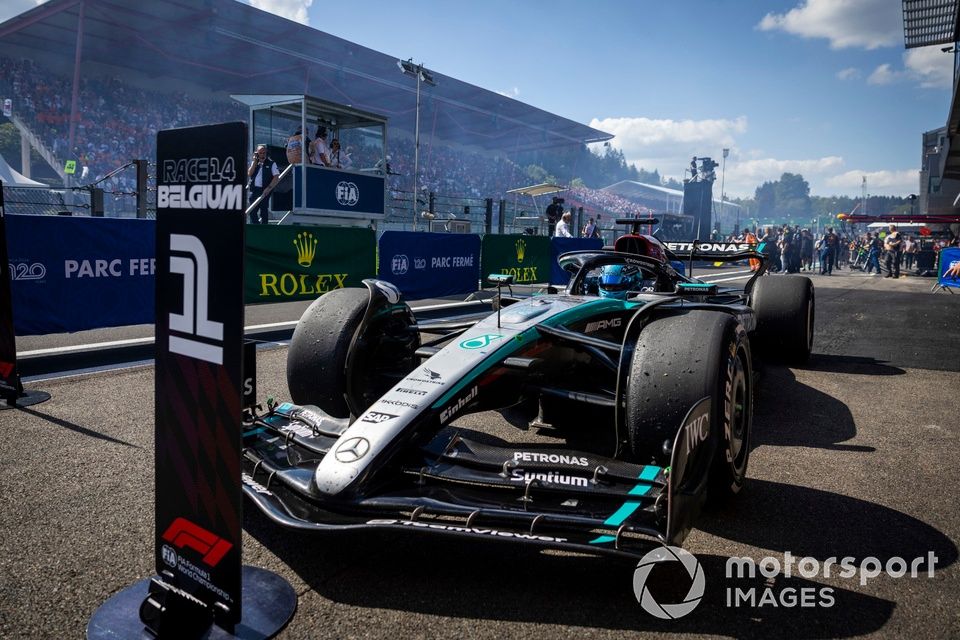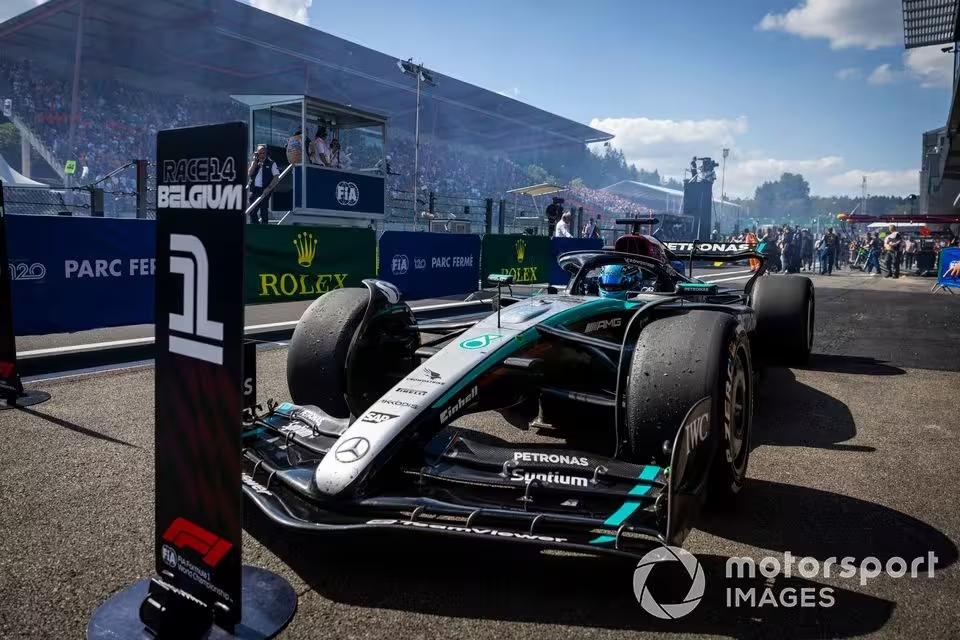George Russell has lost his surprise 2024 Belgian Grand Prix victory due to a strict rule on Formula 1 car weight when it has been drained of fuel.
Russell’s stunning one-stop strategy kept him ahead of team-mate Lewis Hamilton late in the race at Spa, after the second Mercedes had dominated proceedings until the closing stages.
Watch: Weight A Minute – The F1 Belgian Grand Prix News From the Paddock
It all ended with Russell securing a third F1 career GP win, but one hour and 10 minutes after the race had concluded, a report by FIA technical delegate Jo Bauer threw the result into jeopardy.
The rule that quashed Russell’s victory and handed a second win of the season to Hamilton is Article 4.1 of F1’s technical rules, regarding “minimum mass” of each car.
This states: “The mass of the car, without fuel, must not be less than 798kg, at all times during the competition.
“If, when required for checking, a car is not already fitted with dry-weather tyres, its mass will be determined using a set of dry-weather tyres selected by the FIA technical delegate.”
In this instance, only the first part applies, while ‘competition’ refers to any point over a race weekend, but cars being weighed and found to be underweight only matters post-qualifying and race given they can, in theory, run in illegal arrangement in practice sessions.

George Russell, Mercedes F1 W15, 1st position, arrives in Parc Ferme
Photo by: Sam Bloxham / Motorsport Images
Russell’s car was weighed after the Spa race and was found to be at exactly the 798kg limit. But it still had to be drained of fuel, with enough left in the tank to fulfil Article 6.5.2.
This states: “Competitors must ensure that a 1.0 litre sample of fuel may be taken from the car at any time during the competition.
“After a practice session, sprint session, and race, if a car has not been driven back to the pits under its own power, it will be required to supply the above mentioned sample plus the amount of fuel that would have been consumed to drive back to the pits.
“The additional amount of fuel will be determined by the FIA.”
Again, in this instance, only the first part of the rule is relevant.
But, per Bauer’s report and Mercedes being referred to the Spa stewards as a result, it appeared that when Russell’s car was drained of 2.8-litres to fulfil the 1.0-litre fuel sample required by Article 6.5.2 after the initial weighing, fuel was left in the…
Click Here to Read the Full Original Article at Motorsport.com – Formula 1 – Stories…

